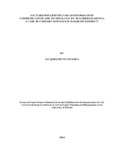| dc.description.abstract | This research sought to investigate the factors that influence the use of information
communication technology by teachers in Kenyan schools. The factors included types of
service automations in schools, level of computer literacy of most teachers, influence of
attitude and the availability of training policies in schools. The research was guided by
technology acceptance model or theory of planned behaviour to better understand the role of
ICT in teaching. The study employed both qualitative and quantitative research design. The
target population for the study was 200 teachers in secondary schools in Kasarani District of
Nairobi County. The population for the study were top management teachers, middle level
teachers and low level management in the seven secondary schools in Kasarani namely: Baba
dogo, Kamiti secondary, Kariobangi North.Girls, Starehe girls, kahawa garrison, Our lady of
Fatima, Ruaraka High school and garden estate secondary. A sample of 127 teachers was
selected at random from the 8 schools for the research study. Primary data was used for the
study and the research instruments were questionnaires. The data was analysed using SPSS
version 22 and other statistical methods. The response rate was 85.82%. The study revealed
that ICT adoption and use by teachers in schools has promoted Job enrichment that has led to
increase of decision making competences for teachers involved in some educational
processes, further the study also established that ICT Adoption has led to simplified teaching,
while others also contend that ICT Adoption and use has led to the improvement of
educational processes in the school. The study established that majority of the respondents
have reported to be comfortable with use of computer applications in teaching, the study also
established that computer effectiveness is a mode of students learning, further the following
factors influence on the ICT adoption and use; Intra-organizational agendas, Emotions of
teachers and Organizational culture of the schools and how they perceive the use of ICT in
teaching. The study finally established that adoption of ICT has with it some consequences,
the study established that adoption, acceptance, and adaptation of ICT policies,
Organizational assimilation and integration of ICT, Structure of curriculum, Institutional
environment and Performance are components of ICT adoption training policies in schools. It
is evident that service automation, levels of computer literacy, attitude on computer use, and
training policies on ICT influence the use of information communication and technology by
teachers in Kenyan schools. The study found out that all the identified factors do influence
the use of information communication and technology. Following the finding of this study,
therefore, the researcher recommends that there is need to address these factors before and
during the process of introducing use of Information communication and technologies in
schools. Technological officers taxed with the responsibilities of introducing technologies in
schools and teaching should first explore the strengths, limitations or otherwise of these
factors in a particular case of teaching before introducing new technologies to the institutions.
Computer services through practical on subject demonstrations and practical’s should be
enhanced. | en_US |

